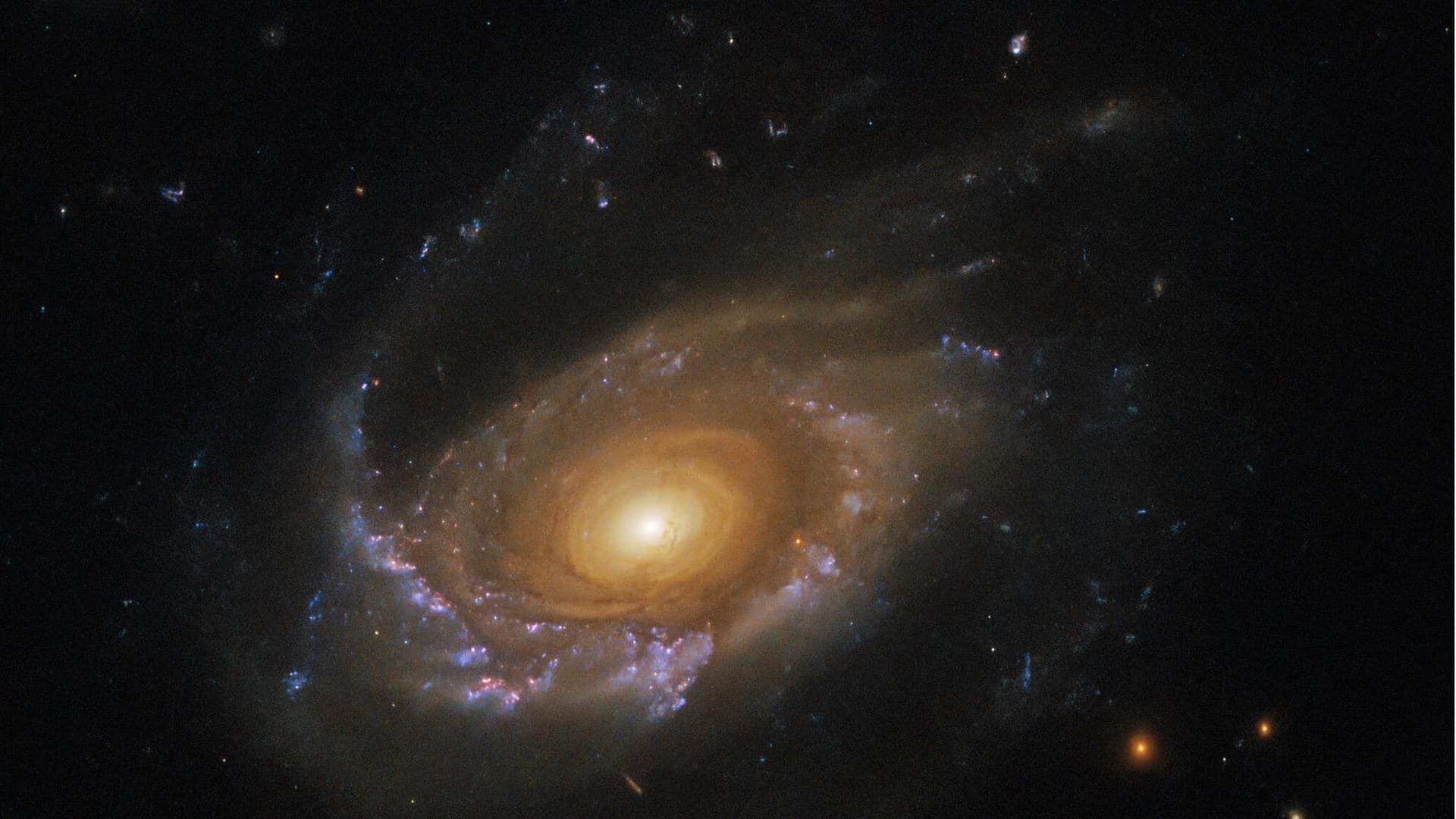
NASA's Hubble telescope finds jellyfish galaxy 900 million light-years away
What's the story
NASA's Hubble Space Telescope has snapped a stunning image of a jellyfish galaxy. The new image offers several details of the spiral galaxy, including its trailing tendrils. Dubbed JW39, the galaxy lies 900 million light-years away in the constellation Coma Berenices. Even though the galaxy has a serene appearance, it is actually suspended in a galaxy cluster filled with hot plasma.
Context
Why does this story matter?
The Hubble Space Telescope recently marked its 33th anniversary. The mission is a collaboration between NASA and European Space Agency (ESA). It is the first major optical telescope to be placed in space and has made more than 1.5 million observations so far. The telescope has helped scientists understand how planets and galaxies form and has imaged some of the farthest galaxies ever seen.
Image
The blue spots depict areas of star formation
The bright core of the JW39 jellyfish galaxy is distinctly visible and is surrounded by concentric rings of dark and light dust. The galaxy's spiral arms are described as "thick and puffy" with "grey dust." The dust from the galaxy's arms spirals toward the right. What's easily noticed in the image is the glowing areas of blue, which depict regions of star formation.
Detail
Jellyfish galaxies are often distinguished by their "trailing tendrils"
Jellyfish galaxies like JW39 are often distinguished by their "trailing tendrils," as seen in the new Hubble image. "Compared to their more isolated counterparts, the galaxies in galaxy clusters are often distorted by the gravitational pull of larger neighbors, which can twist galaxies into a variety of weird and wonderful shapes," ESA explained in a blog post.
Explanation
The space between the galaxies is filled with "hot plasma"
The JW39 is suspended in a "ferociously hostile" galaxy cluster. The space between galaxies in a cluster is filled with "searingly hot plasma" called intracluster medium. "While this plasma is extremely tenuous, galaxies moving through it experience it almost like swimmers fighting against a current, and this interaction can strip galaxies of their star-forming gas," explained ESA.
Process
Why does the galaxy have "trailing tendrils"?
The interaction between the intracluster medium and the galaxies is called "ram-pressure stripping," which causes the trailing tendrils of JW39. "As JW39 has moved through the cluster the pressure of the intracluster medium has stripped away gas and dust into long trailing ribbons of star formation that now stretch away from the disc of the galaxy," per ESA.